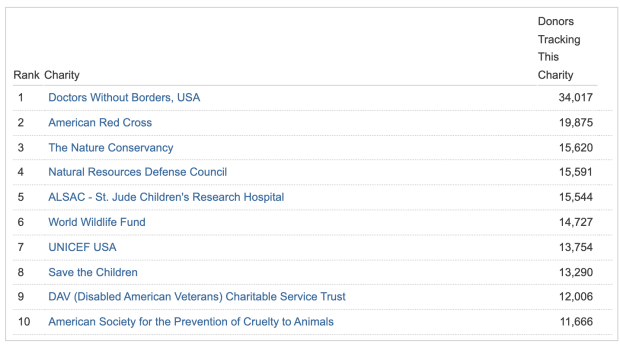Bitcoin enables transparent usage of funds through recorded transactions and verifiable crowdfunding.
Bitcoin Smart Contracts Are The New Frontier
When Elon Musk tweeted at the World Food Programme (WFP) to open their books and provide readily accessible accounting to solve world hunger, the organization used a lot of fancy words but did not honor his request. Why?
Why would an organization, whose mission it is to “Solve Global Hunger,” not do whatever they could in their power to accept an additional $6 billion from the richest man in the world? Are they hiding something? What if the organization didn’t quite live up to its mission statement? I mean, how would we know? Are we expected to trust a few marketing pictures and accounting tricks to disclose where donations actually go?
This begs the question of transparency and its role among other charitable organizations. The Red Cross. Doctors without Borders. Save the Children. My intent here is not to smear any of these organizations. The question is: Do we believe charitable organizations have a duty to prove that money and support actually gets to the people that need these resources the most? Are there factors enforcing this type of accountability outside of mission statements and internal auditing? “Don’t trust, verify.”
https://twitter.com/elonmusk/status/1454809318356750337?s=20
https://twitter.com/elonmusk/status/1454921466500222977?s=20
What if we wanted to donate to a cause that we thought was just and right? A cause like the #FreedomConvoy of Canadian Truckers? We can see that centralized outfits like GoFundMe and GiveSendGo work pretty well at first. User interface is clean; personal funding is quick and easy. But what happens when these platforms deem your cause unjust? What pressures can centralized powers put on these crowdsourcing sites to justify instant funding freezes, or worse yet, use donations for something completely different? Who are they to decide what people do with their hard-earned money?
After venturing down the rabbit hole of “RARE PEPEs,” I started to realize that even after being orange pilled since 2016, I completely missed the potential of Layer 2 protocols on Bitcoin with bitcoin-backed NFT smart contracts.
Now before you go, “Whoa whoa G, are you gonna start shitcoining us with NFTs of bored apes?” I’m gonna ask you to hear me out.
The first smart contract asset minted on Bitcoin was back in 2014. The asset test is described here on the BitcoinTalk forum. Yes, Bitcoin was actually first to the NFT and smart contract space well before the Bored Apes. NFTs are cool and all, but the power behind the technology of smart contracts on Layer 2 Bitcoin is revolutionary. Why? Well, how can millions of people crowdsource funding for a just and righteous cause like, let’s say, world hunger, without centralized powers claiming that world hunger is no longer a just and righteous cause? What if we wanted to support Bitcoin City in El Salvador even if GoFundMe abruptly decides El Salvador is a blacklisted country? How can we trust an international contract that is easy for everyone to understand? If you are starting to understand where this is going, you are beginning to see the much larger picture.
The best way to experiment with a new system is to use it. So, I put this new “Counterparty” Layer 2 system to the test. Counterparty is not its own blockchain, rather, it “rides on top of” the Bitcoin blockchain. Another way to think about the relationship is to use the Russian nesting doll comparison where the bigger doll would be the Bitcoin transaction and the next doll (located inside) would be a Counterparty transaction. This embedding method is technically known as “embedded consensus.”
I created my own token called BTCTRUCKERS. I created some art with the intention of all proceeds sent to the truckers in Canada. I wanted to see if we could somehow show open-source accounting to a charitable cause, transparently. I created some art and boom. I had my own bitcoin-backed NFT smart contract. My art even made the RAREFAKE series 5 Card 15 (kind of a big deal).
I set up what Counterparty calls “dispensers” (think of a vending machine transaction). In this exchange, you send some BTC and the Counterparty system automatically transfers the asset/NFT to the buyer’s wallet, then sends you the BTC. Pretty cool, right?
“So, how can we trust you, G? Why would people buy your NFT? How can you prove to us that BTC was sent to the truckers?” Excellent question, I am glad you asked!
First, let’s find the asset: https://xchain.io/asset/BTCTRUCKERS


Next, we click on the “dispensers” tab and see that I have set up multiple assets; the first who purchased got the cheaper price. Now, as you can see, the first three dispensers sold out and we only need a few more to close out dispenser four. With some simple math, we can see that each of the dispensers that sold out had 11 NFTs in them before they moved to a higher price.
https://xchain.io/tx/70fd533e768eb050062ae0542756eabe36fd6ac30642a5435ab9903b8efc9896

To recap: The first dispenser had 11 NFTs for the price of 0.001111 which means 11 times 0.001111 equals 0.012221
We continue the math for dispenser two and three at the higher price and get a combined total of 0.085547. (Another great site that aggregates all the sales data: https://dankset.io/assets/BTCTRUCKERS)
Below is the transaction of the NFT pieces priced in bitcoin on the Bitcoin blockchain sent to the Canadian truckers … How do we know for sure? The tallycoin (https://tallyco.in/s/lzxccm/) site directed everyone to send funds to the below Bitcoin address: bc1qlc2gpmzrr9gded07d9a40lt2lq7pp2v7h4c5jx
We can also see that the funds came from the same wallet that created BTCTRUCKERS:
https://xchain.io/asset/BTCTRUCKERS, 1JJP986hdU9Qy9b49rafM9FoXdbz1Mgbjo and
https://blockstream.info/tx/f5a87236bdfe3adc7ae7c9ac82130cf89b679b1c6d4fcdf5dddc98497579577f.
So far, I myself have raised over 20 million sats to date for the truckers with just this one piece as an example of transparency. Not only can I prove the transaction was sent to the Freedom Convoy, but the buyer now has a scarce digital token representing that donation. If I can do it, why can’t the WFP? The Red Cross?
To take this even further, how can we trust elected officials to spend money for certain projects we voted for without the transparency we just witnessed through Layer 2 protocols on Bitcoin? Accountability and trust by verification will set humanity on a new course for accountability from our leaders.
Like Elon Musk says, “Sunlight is a wonderful thing.”
Update: Since writing this article, as of March 7, 2022, I still have 0.15 BTC in the wallets to be sent to the truckers, however, the Canadian government’s crackdowns forced them to stop using the original donation address. I personally spoke with Greg Foss on March 5, 2022 at Unconfiscatable 2022, the 15 BTC remaining in the wallets and any future sales will be going to the legal defense funds of the Canadian truckers as the lawsuit is now in the hundreds of millions. All of my sats will be held until that new address is revealed.
This is a guest post by PappyG45. Opinions expressed are entirely their own and do not necessarily reflect those of BTC Inc or Bitcoin Magazine.




